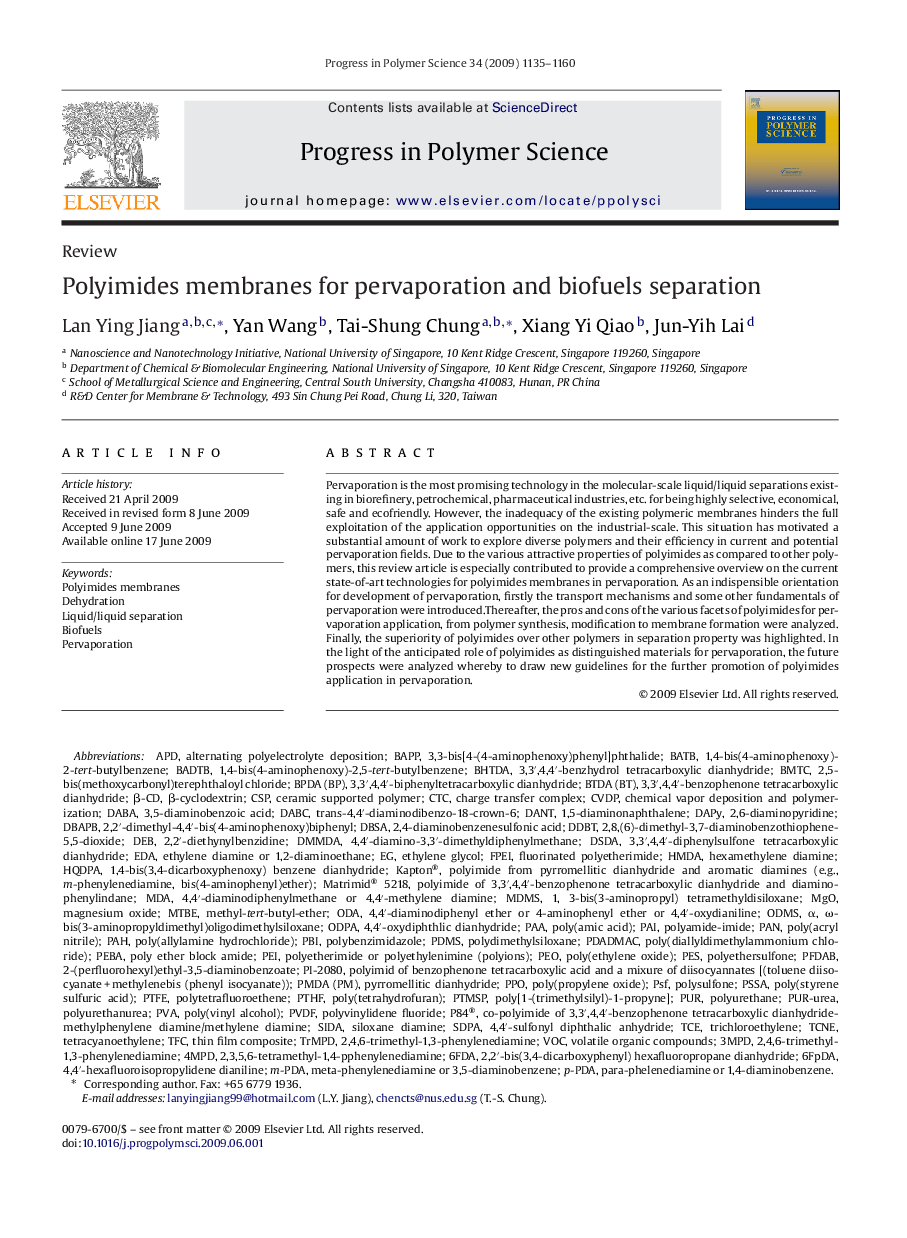| Article ID | Journal | Published Year | Pages | File Type |
|---|---|---|---|---|
| 5208659 | Progress in Polymer Science | 2009 | 26 Pages |
Abstract
Pervaporation is the most promising technology in the molecular-scale liquid/liquid separations existing in biorefinery, petrochemical, pharmaceutical industries, etc. for being highly selective, economical, safe and ecofriendly. However, the inadequacy of the existing polymeric membranes hinders the full exploitation of the application opportunities on the industrial-scale. This situation has motivated a substantial amount of work to explore diverse polymers and their efficiency in current and potential pervaporation fields. Due to the various attractive properties of polyimides as compared to other polymers, this review article is especially contributed to provide a comprehensive overview on the current state-of-art technologies for polyimides membranes in pervaporation. As an indispensible orientation for development of pervaporation, firstly the transport mechanisms and some other fundamentals of pervaporation were introduced.Thereafter, the pros and cons of the various facets of polyimides for pervaporation application, from polymer synthesis, modification to membrane formation were analyzed. Finally, the superiority of polyimides over other polymers in separation property was highlighted. In the light of the anticipated role of polyimides as distinguished materials for pervaporation, the future prospects were analyzed whereby to draw new guidelines for the further promotion of polyimides application in pervaporation.
Keywords
BAPPPESPAAβ-CyclodextrinPPOTFCMTBEDEBPBIAPDβ-CDPTMSPPDADMACPVATCNEDAPY6FDAHMDAPEBAHexamethylene diamineMDAPSSADSDAODPAPTHFPEIPVDFEDATCEPAHCSPPDMSPTFECTCVOC1,5-diaminonaphthalene2,6-DiaminopyridinedBSAMDMspsfTetracyanoethyleneODAEthylene glycol3,5-diaminobenzoic acidMagnesium oxidePAIPervaporationVolatile organic compoundsTrichloroethyleneDabapurDehydrationBiofuelsSIDAPANCharge transfer complexMgOPoly(amic acid)Poly(propylene oxide)Poly(tetrahydrofuran)poly(diallyldimethylammonium chloride)Poly[1-(trimethylsilyl)-1-propyne]Polyamide-imidePES, Polyethersulfonepoly(ethylene oxide)PolybenzimidazolePolysulfonepoly(allylamine hydrochloride)Poly(vinyl alcohol)Polyvinylidene fluoridePolydimethylsiloxanePolyurethanePEOThin film composite
Related Topics
Physical Sciences and Engineering
Chemistry
Organic Chemistry
Authors
Lan Ying Jiang, Yan Wang, Tai-Shung Chung, Xiang Yi Qiao, Jun-Yih Lai,
